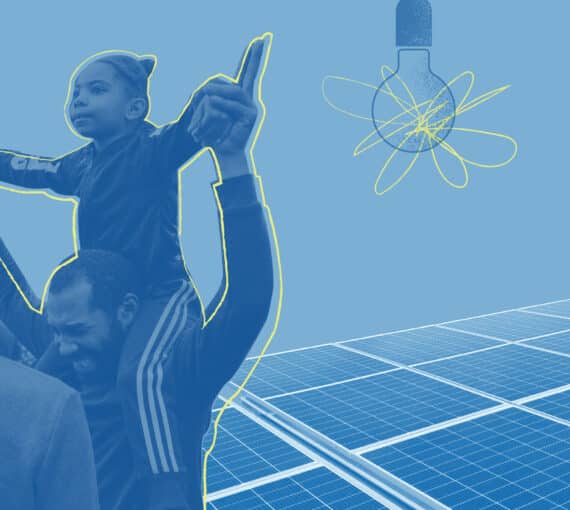
The benefits of adding wind and solar to power that electricity go deeper than fighting climate change; they include more affordable energy bills, healthier homes and more good quality jobs. (Photo: Guogete via Unsplash)
We all need and use electricity — to heat and cool our homes, power our online lives and charge our cars or power transit commutes.
Canada has set a goal of 100 per cent zero-emissions electricity by 2035, with new clean electricity regulations expected this year.
The benefits of adding wind and solar to power that electricity go deeper than fighting climate change; they include more affordable energy bills, healthier homes and cities and more good quality jobs.
The stories we often hear of wind, solar and other renewables rarely reflect the current reality. Today, wind and solar are proven technologies with decades of successful operation in Canada. They’re now the least expensive sources of electricity in history — cheaper than electricity from gas, oil, coal or nuclear.
Canada’s electricity grid is aging and needs upgrading as we begin to use much more electricity to power our lives. The good news is that even with these additional investments, the cost of household energy will, within time, go down for everyone as we move away from fossil fuels and toward the efficient use of clean electricity.
The good news is that even with these additional investments, the cost of household energy will, within time, go down for everyone as we move away from fossil fuels and toward the efficient use of clean electricity.
With affordability top of mind, low-income families need direct financial support to unlock these benefits and to access building retrofits and energy-saving technologies like electric heat pumps. A national strategy to alleviate energy poverty would ensure those suffering from the high costs of fossil fuels get a break as they transition to cleaner options.
Renewable energy is also local, secure, stable energy. It’s true that the wind doesn’t always blow and the sun doesn’t always shine. But grids can be reliably run with secure power using energy storage, new transmission connections between provinces and Canada’s significant existing hydroelectric resources.
Lots of jobs
The fallout of Russia’s invasion of Ukraine and other disruptive global events speak to the price volatility of fossil fuels. It’s impossible to predict the increasingly common price spikes for fossil gas to heat our homes or gasoline to fuel our cars. Contracts for renewable electricity often lock in low, predictable pricing for 20 to 30 years, without being so beholden to global markets or supply chains.
Building all of this new electricity infrastructure and upgrading homes to be more energy efficient will create jobs. Lots of jobs. A Clean Energy Canada report estimates that meeting clean energy goals will lead to a net gain of 700,000 jobs by 2050 in Canada — even accounting for job losses in the oil and gas sector during the energy transition.
Indigenous communities are leaders in clean electricity projects and deserve to be at the forefront of these benefits as a key element of energy sovereignty and economic reconciliation.
We’re used to living with the health effects caused by fossil fuels, but we shouldn’t be.
The energy transition’s health benefits are often overlooked. We’re used to living with the health effects caused by fossil fuels, but we shouldn’t be. Every day, more than 42 people in Canada die from health complications caused by burning fossil fuels, according to a federal government report. This has economic impacts to the overstretched health care system reaching more than $120 billion a year.
With so many benefits, why aren’t we seeing a push for more renewables? The foundation for this transition has been set with an unprecedented tens of billions of dollars in investments for clean electricity in the March federal budget. But these investments will only pay off if they’re coupled with strong clean electricity regulations that ensure a move away from fossil fuels to renewables.
Despite the oil and gas lobby’s claims to the contrary, there has never been a better time to leave fossil fuels behind once and for all.
The moment for affordable, secure, renewable power has arrived. It’s time to lock in new clean electricity regulations that ensure we get to 100 per cent clean electricity by 2035. The sooner we start this work, the sooner communities will begin to see the benefits.
This op-ed was originally published in The Star.
Related projects
Always grounded in sound evidence, the David Suzuki Foundation empowers people to take action in their communities on the environmental challenges we collectively face.



